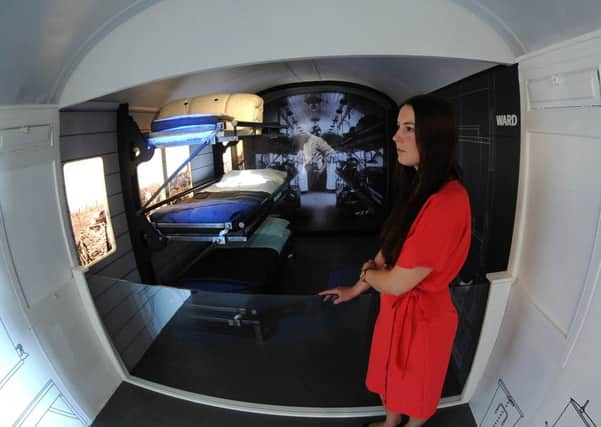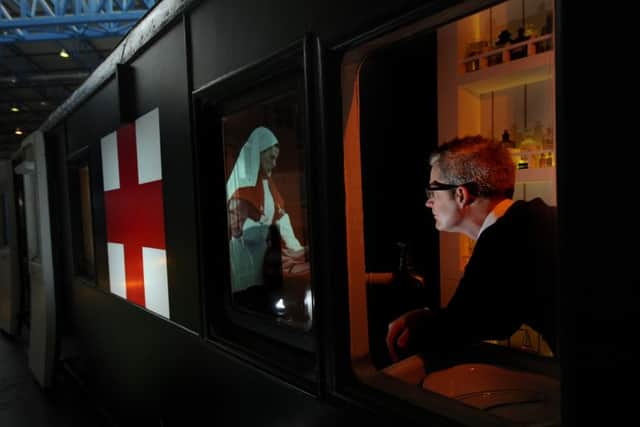Life on board an ambulance train recreated - 100 years on from their busiest time


The huge operation, 100 years ago to the day, was unlike anything these hospitals-on-wheels had experienced before, transporting injured servicemen, the first to make it out of France from the frontline of the Battle of the Somme, to recuperation.
They were remembered at the National Railway Museum in York today as museum staff met the descendants of medical staff at the launch of its new display, Railways and the First World War, which uses real stories combined with film footage and digital projections of photographs to covey the realities of time on board ambulance train.
Advertisement
Hide AdAdvertisement
Hide AdArchivist Alison Kay said: “A week on from the start of the battle, 100 years ago, they were starting to deal with the backlash of the first days of battle. It was a huge operation.


“Throughout the war, York was a receiving station, and these went right up to the top of Scotland. But just because you were on home soil didn’t mean you were sent anywhere near home for treatment.
“We have examples of soldiers from York being sent as far as Glasgow for treatment.”
The museum’s staff spent many months preparing for the exhibition, speaking to the families of those who worked on the tightly-packed trains, which were fully equipped with wards, pharmacies and kitchens.
Advertisement
Hide AdAdvertisement
Hide AdThey included Caroline Stevens, the great-niece of First World War nurse Kate Luard, and Alan and Richard Willis, son and grandson of ambulance train orderly George Owen Willis.


Staff would still like to speak to people in Yorkshire whose families worked on the trains.
“It has been really interesting talking to the families, being able to hear the stories that have been passed down,” Miss Kay said. “We haven’t been able to speak to any relatives in York but would very much like to hear from anybody who could help.”
As part of the exhibition, a series of talks will be held at the National Railway Museum in September with experts sharing their knowledge about ambulance trains. Films loaned be the Imperial War Museum will also be shown.